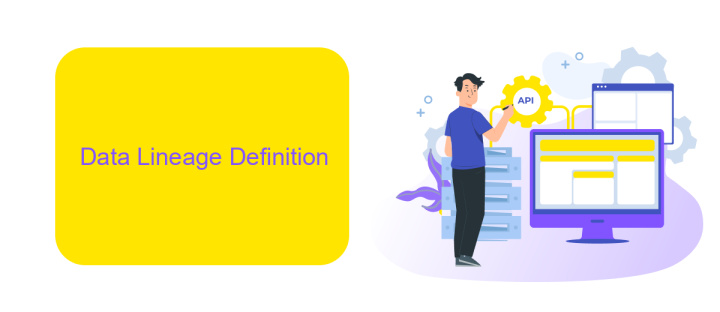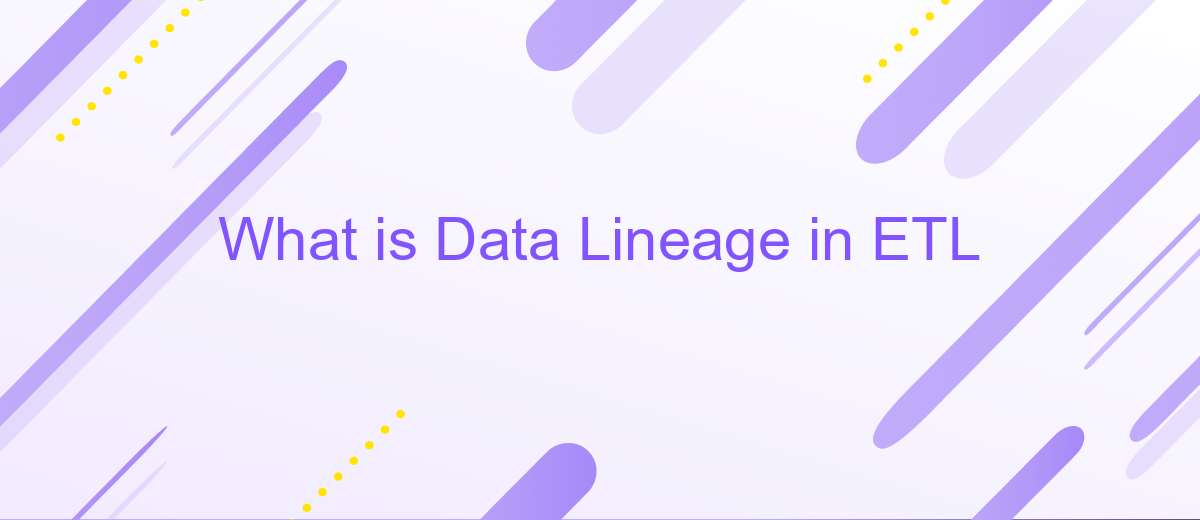What is Data Lineage in ETL
Data lineage in ETL (Extract, Transform, Load) refers to the lifecycle and movement of data through various stages of a data pipeline. It provides a detailed map of data's origins, transformations, and ultimate destination, ensuring transparency and traceability. Understanding data lineage is crucial for maintaining data quality, compliance, and effective troubleshooting in complex data ecosystems.
Introduction
Data lineage in ETL (Extract, Transform, Load) processes is a critical aspect of data management and governance. It involves tracking the flow of data from its source to its destination, ensuring transparency, accuracy, and integrity throughout the data lifecycle. Understanding data lineage helps organizations maintain data quality, comply with regulations, and troubleshoot data-related issues efficiently.
- Ensures data accuracy and consistency
- Facilitates regulatory compliance
- Enhances data governance and management
- Improves troubleshooting and issue resolution
Implementing effective data lineage in ETL processes can be challenging, but leveraging integration tools like ApiX-Drive can simplify the task. ApiX-Drive allows businesses to automate data flows between various systems, ensuring seamless data integration and accurate lineage tracking. By utilizing such tools, organizations can achieve greater transparency and control over their data ecosystems, ultimately driving better decision-making and operational efficiency.
Data Lineage Definition

Data lineage refers to the detailed tracking and visualization of data as it flows from its source through various transformations, integrations, and storage systems within an ETL (Extract, Transform, Load) process. It provides a comprehensive map of data movement, allowing organizations to trace the origins, transformations, and destinations of their data. This capability is crucial for ensuring data quality, compliance, and governance, as well as for troubleshooting and optimizing data workflows.
Effective data lineage involves capturing metadata at each stage of the ETL process, which can be facilitated by integration tools such as ApiX-Drive. ApiX-Drive helps automate and manage integrations between different data sources and destinations, ensuring seamless data flow and accurate lineage tracking. By leveraging such tools, organizations can gain insights into data dependencies, identify potential issues, and maintain a transparent, reliable data ecosystem.
Importance and Benefits of Data Lineage

Data lineage is crucial in ETL processes as it provides a clear view of the data's journey from source to destination. This transparency ensures data accuracy, compliance, and enhances trust in the data being used for decision-making.
- Improved Data Quality: By tracking data lineage, organizations can identify and correct data quality issues at their source.
- Regulatory Compliance: Data lineage helps in meeting regulatory requirements by providing a traceable path of data transformations and movements.
- Enhanced Troubleshooting: It simplifies the process of pinpointing errors and understanding their origins, reducing downtime and increasing efficiency.
- Better Data Governance: Data lineage supports robust data governance practices by ensuring data integrity and security.
- Optimized Data Integration: Tools like ApiX-Drive facilitate seamless integration and data flow management, leveraging data lineage to ensure consistent and reliable data transfer across systems.
In summary, data lineage is indispensable for maintaining high data standards, ensuring compliance, and enhancing operational efficiency. By leveraging data lineage, organizations can achieve greater accuracy, reliability, and trust in their data-driven initiatives.
Data Lineage in the ETL Process

Data lineage in the ETL process refers to the tracking and visualization of data as it moves through the Extract, Transform, and Load phases. This practice ensures that data is accurately traced from its origin to its final destination, providing transparency and accountability.
By implementing data lineage, organizations can improve data quality, enhance compliance with regulations, and streamline troubleshooting. It allows stakeholders to understand the flow of data, identify bottlenecks, and ensure consistency across various datasets.
- Improved data quality and integrity
- Enhanced regulatory compliance
- Streamlined troubleshooting and debugging
- Better understanding of data flow and dependencies
Tools like ApiX-Drive can assist in setting up and managing data lineage within ETL processes. ApiX-Drive offers seamless integration capabilities, enabling organizations to connect various data sources and track data movement efficiently. By leveraging such tools, businesses can maintain robust data governance and ensure the reliability of their data pipelines.
- Automate the work of an online store or landing
- Empower through integration
- Don't spend money on programmers and integrators
- Save time by automating routine tasks
Tools and Best Practices for Data Lineage
Implementing effective data lineage in ETL processes requires the use of specialized tools and adherence to best practices. Tools like Apache Atlas, Talend, and Informatica provide robust capabilities for tracking and managing data lineage. These tools help in visualizing data flow, ensuring data quality, and maintaining compliance with regulatory requirements. By automating the documentation of data movement and transformations, they reduce the risk of errors and enhance data governance.
Best practices for data lineage include regular audits and updates to the data lineage documentation, ensuring that all data sources and transformations are accurately recorded. Utilizing integration services like ApiX-Drive can streamline the process by automating data transfers between various systems, enhancing the accuracy and efficiency of data lineage tracking. Additionally, fostering a culture of data stewardship within the organization, where all stakeholders are responsible for maintaining data integrity, is crucial for the successful implementation of data lineage practices.
FAQ
What is Data Lineage in ETL?
Why is Data Lineage important in ETL?
How can Data Lineage improve data governance?
What are the challenges in implementing Data Lineage in ETL processes?
How can automation tools assist in managing Data Lineage?
Routine tasks take a lot of time from employees? Do they burn out, do not have enough working day for the main duties and important things? Do you understand that the only way out of this situation in modern realities is automation? Try Apix-Drive for free and make sure that the online connector in 5 minutes of setting up integration will remove a significant part of the routine from your life and free up time for you and your employees.


